I get many questions on the various activities and excursions you can do on a culturally exotic trip. Part of the beauty of traveling to novel destinations is that one gets so much richer in knowledge by seeing, learning and understanding a different way of life from their own.
In this featured post, I will be sharing an insider experience visiting the floating villages of northern Vietnam. Floating villages, what do you mean? Yes, far from New York City exists an actual community of people that live on the water in floating homes, schools, and businesses. Touring the floating village I had the opportunity to meet locals, visit a small school and see what it is like to live daily life right above the most beautiful emerald waters in the world. Since I spent my earlier years after college writing a children’s book and teaching young kids here in the United States, I was excited to donate over 200+ copies of my children’s book to the local children. Sharing my book with these children was a great way for local educators to teach english and entertain young students with colorful illustrations.
Aside from the floating villages, we also ventured off to see the cultivation of pearls at a nearby pearl farm. One of the richest sources of business from this part of the world is the harvesting of pearls. Here you will see the pearl harvesting and preparation process that goes into making that shiny pearl necklace you love to wear. Skip through the photographs below and find a full recap with insider tips on planning your next cultural adventure in Vietnam. I hope you enjoy this inside look at the floating villages and pearl farm!
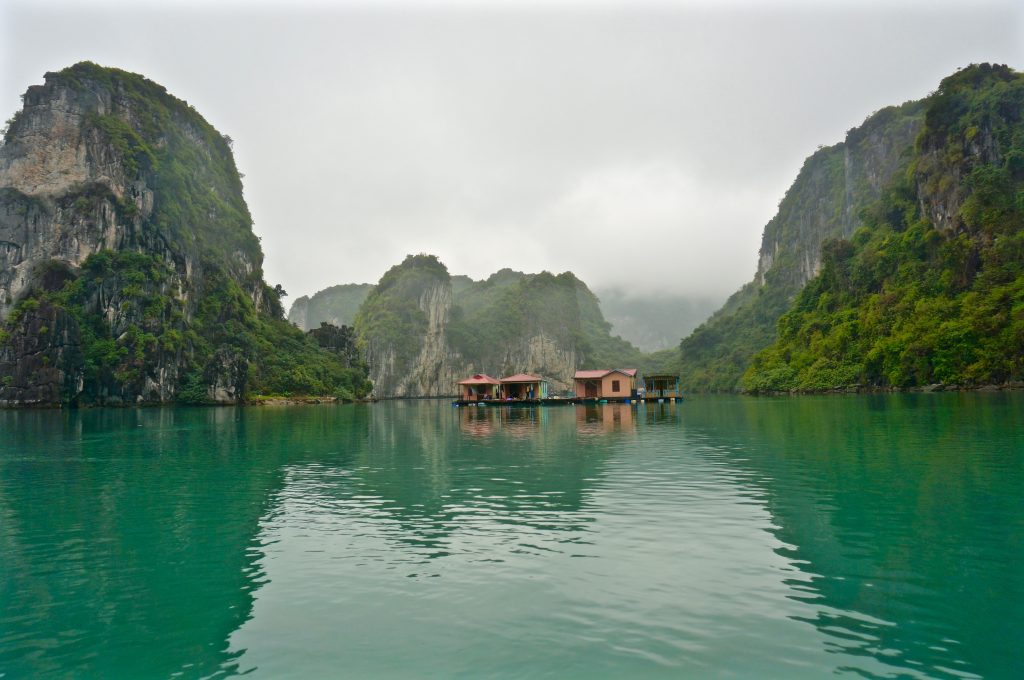
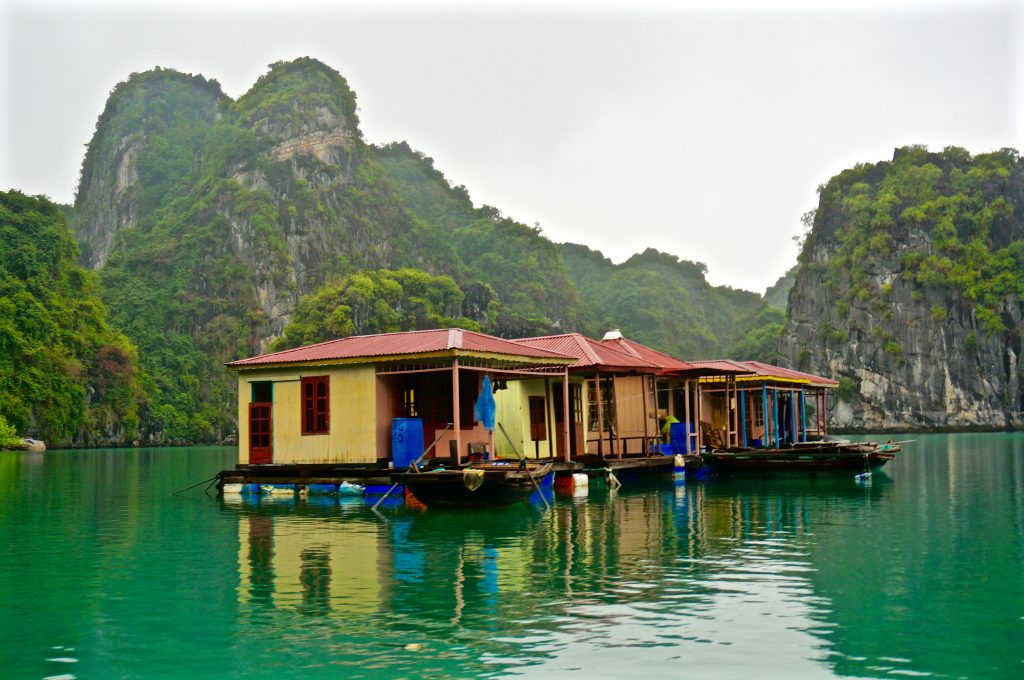

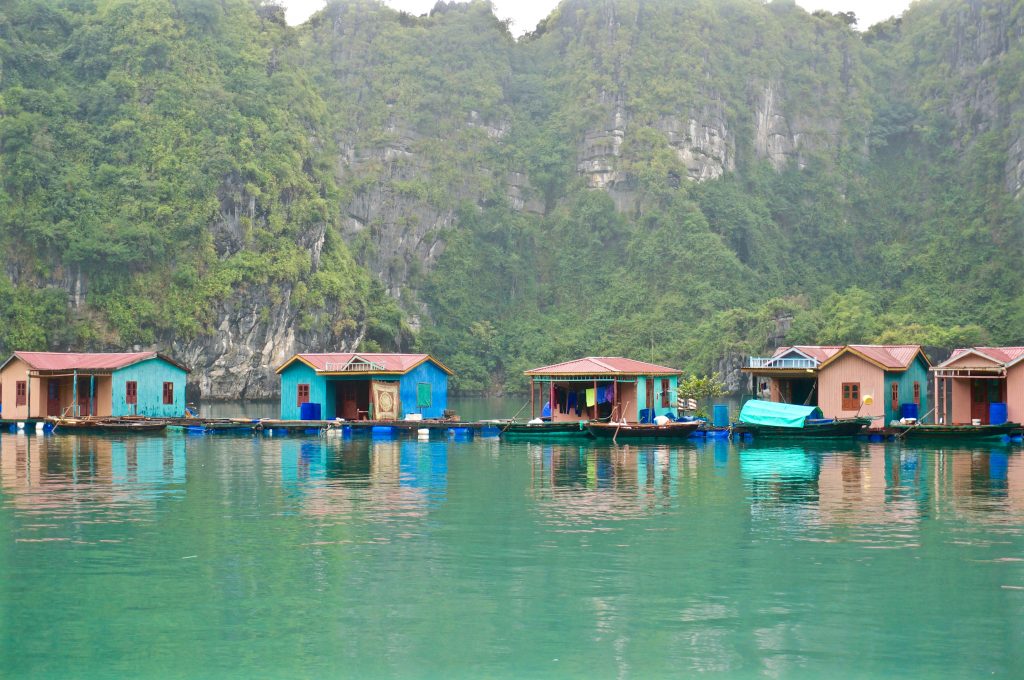
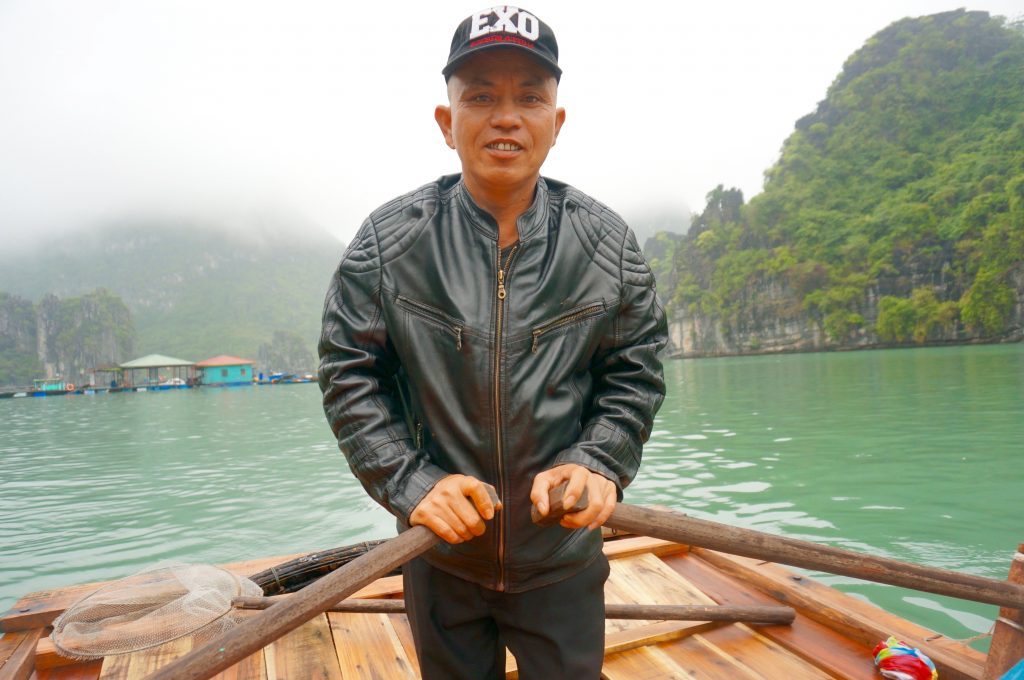
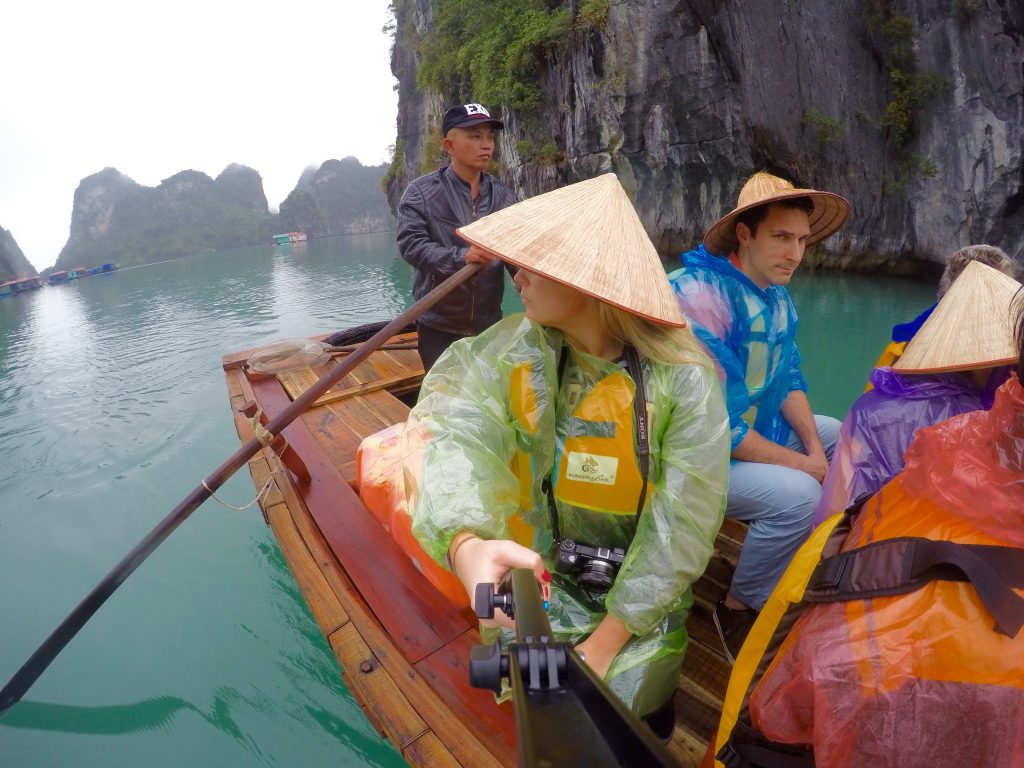
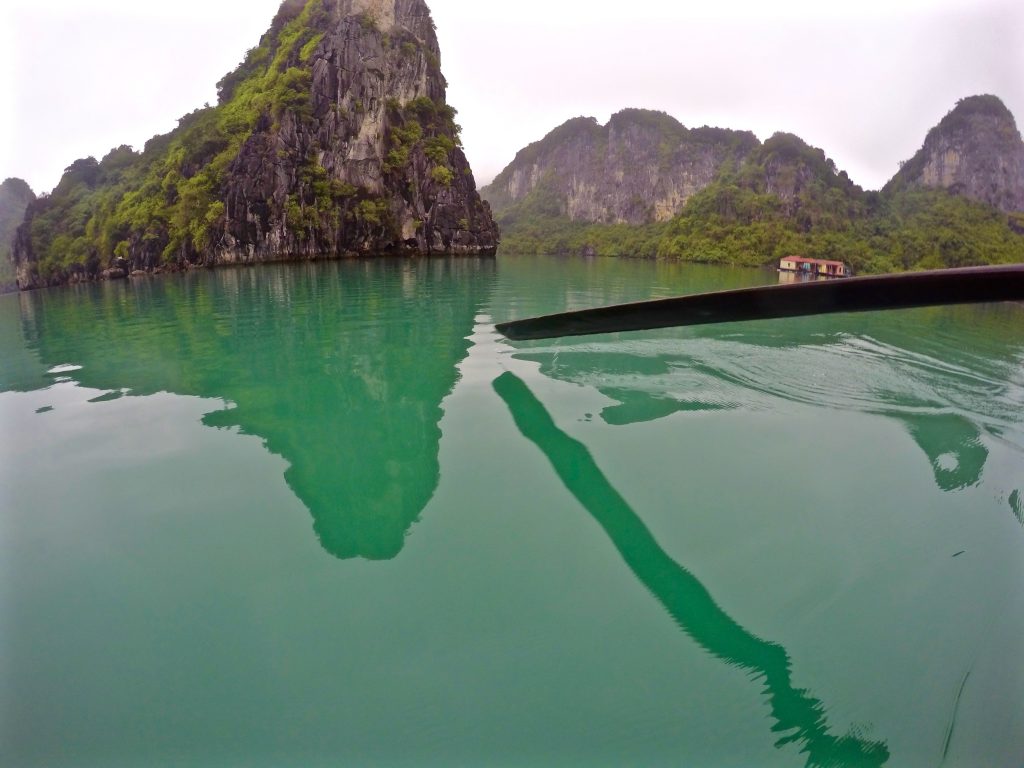
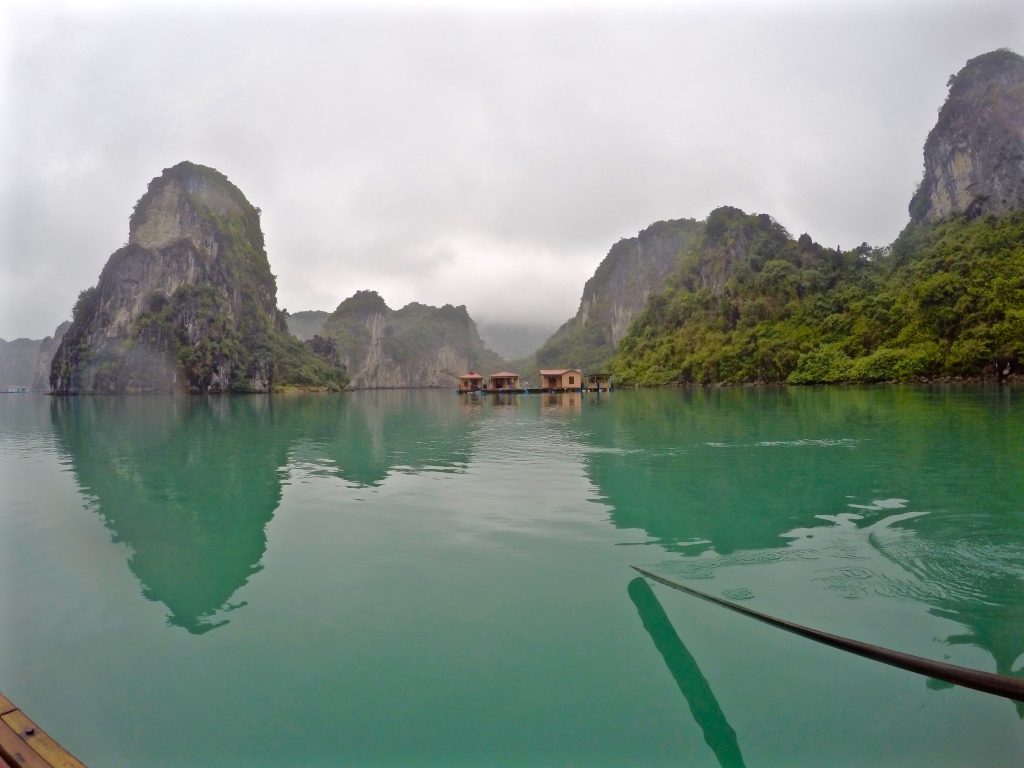

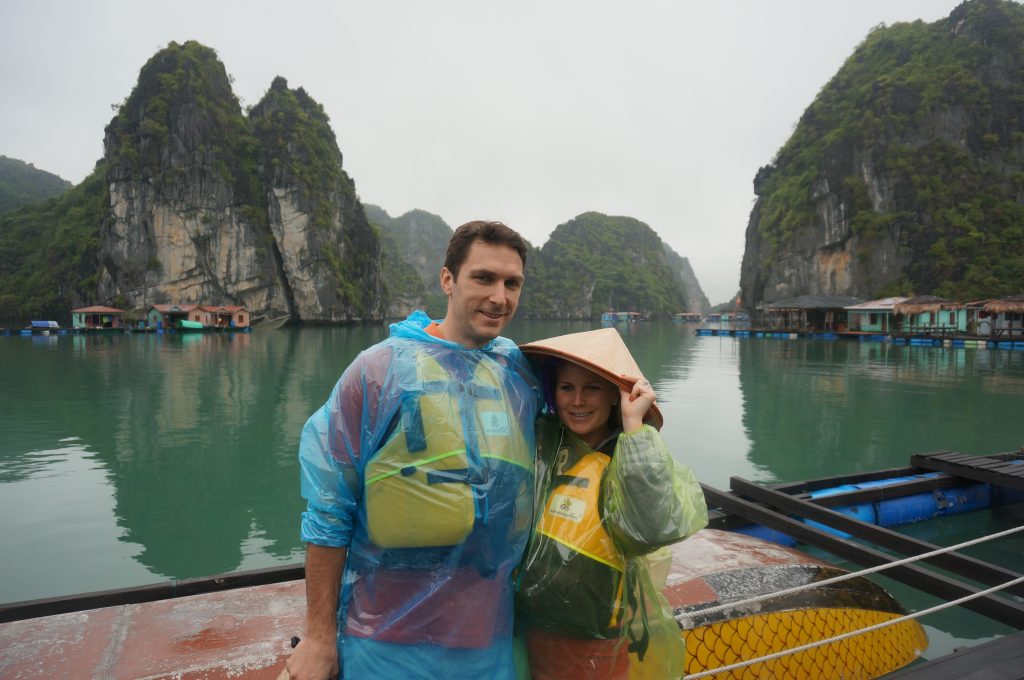

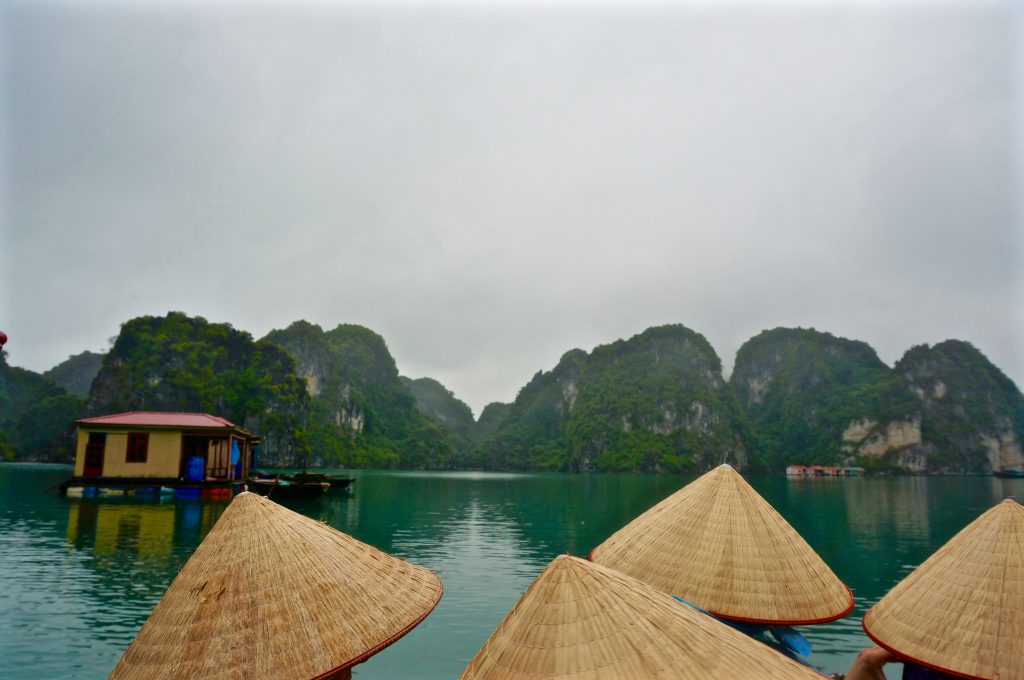
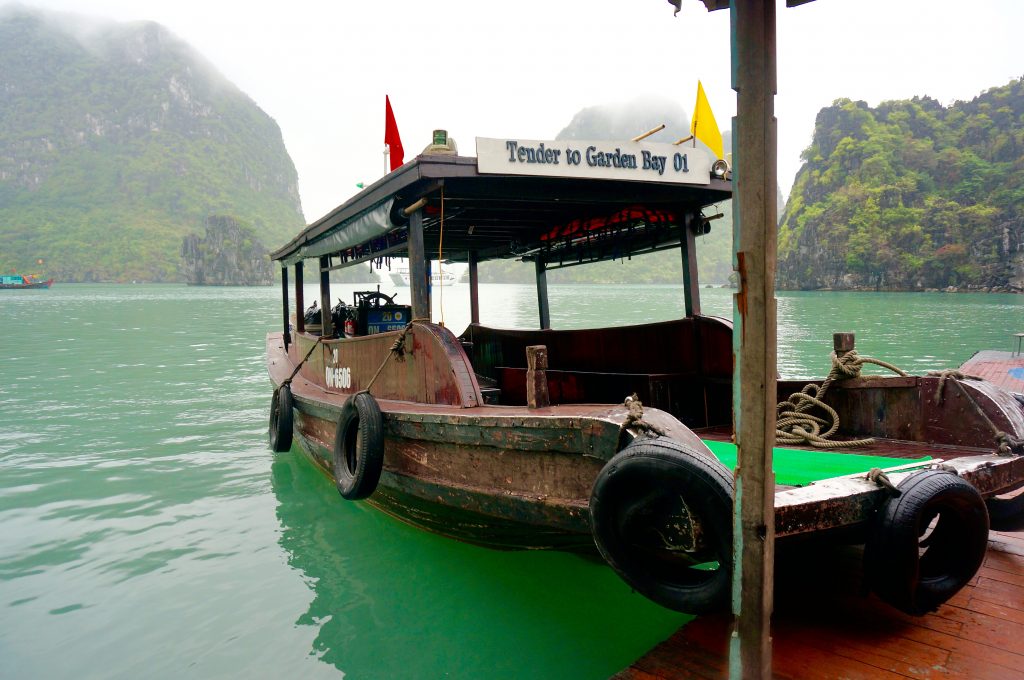
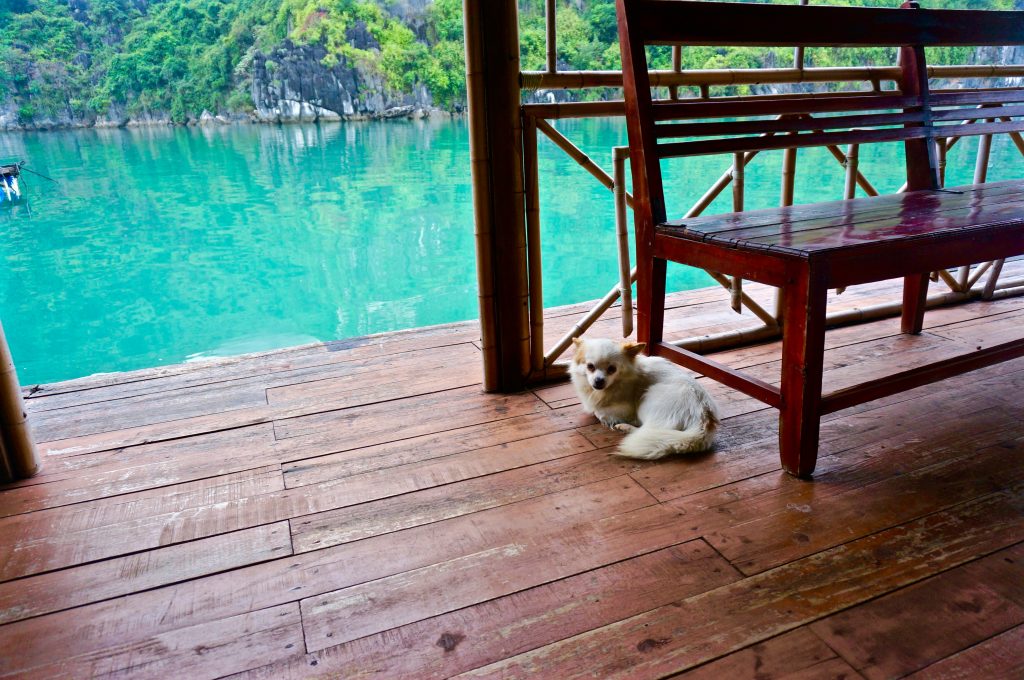
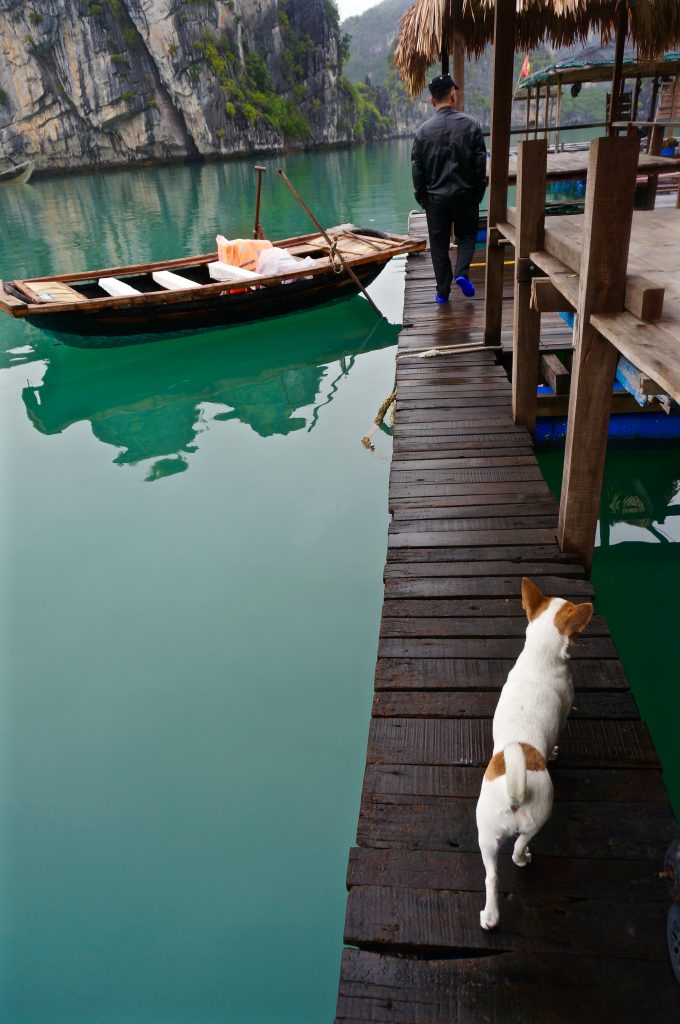
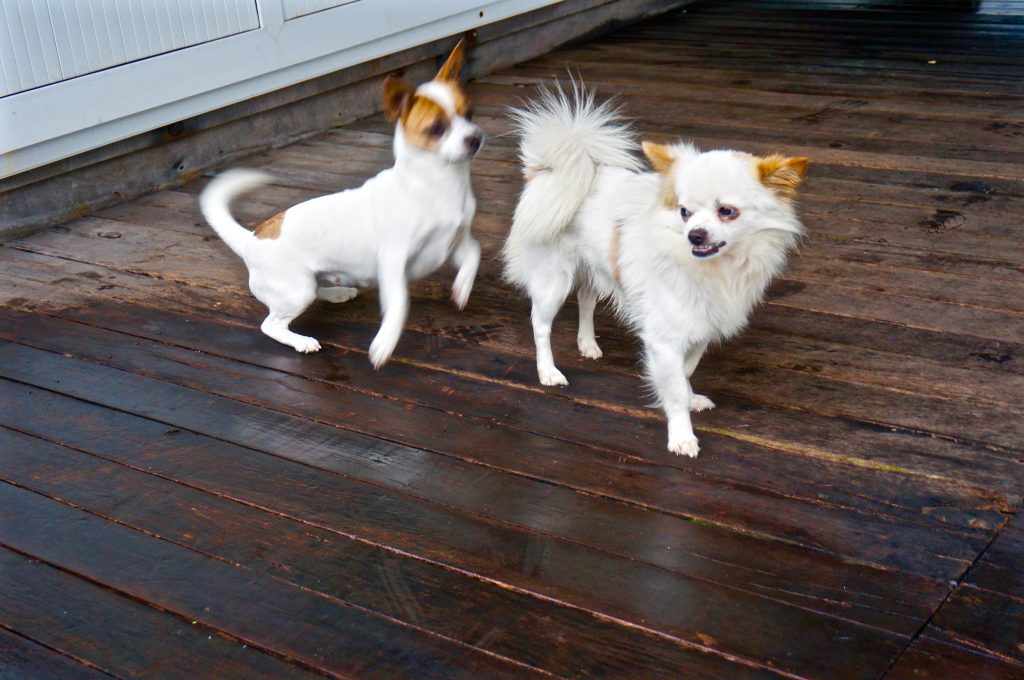
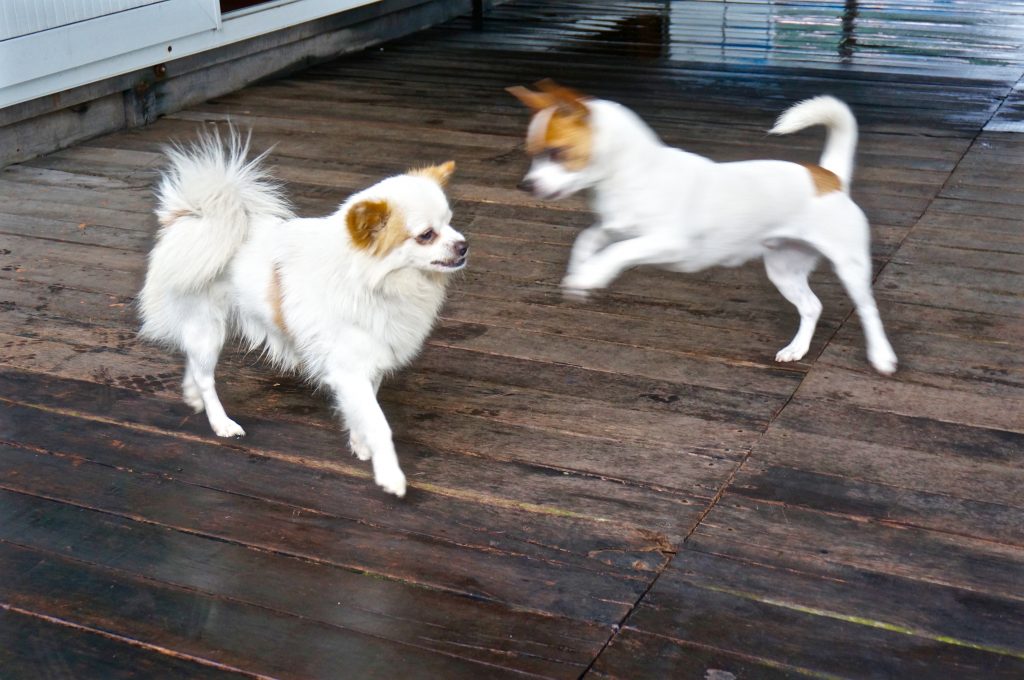
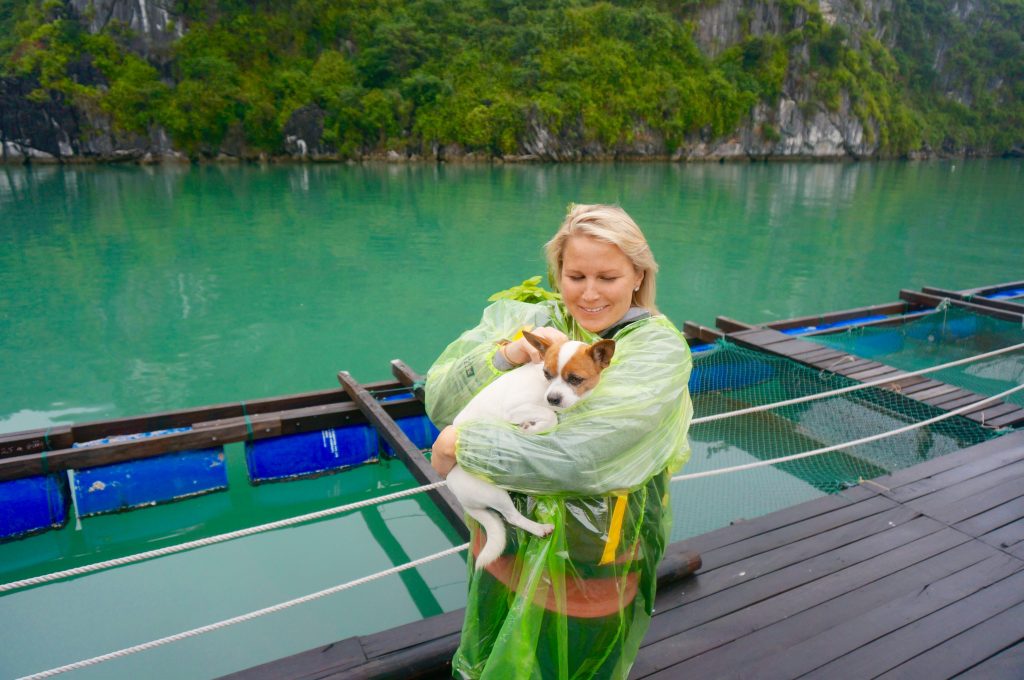

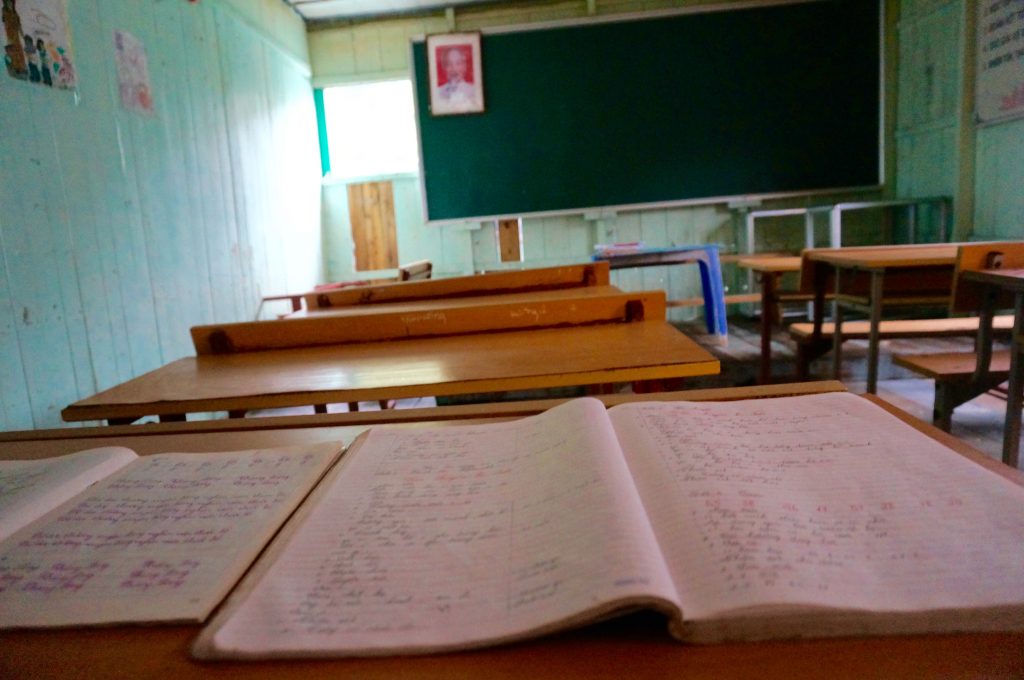
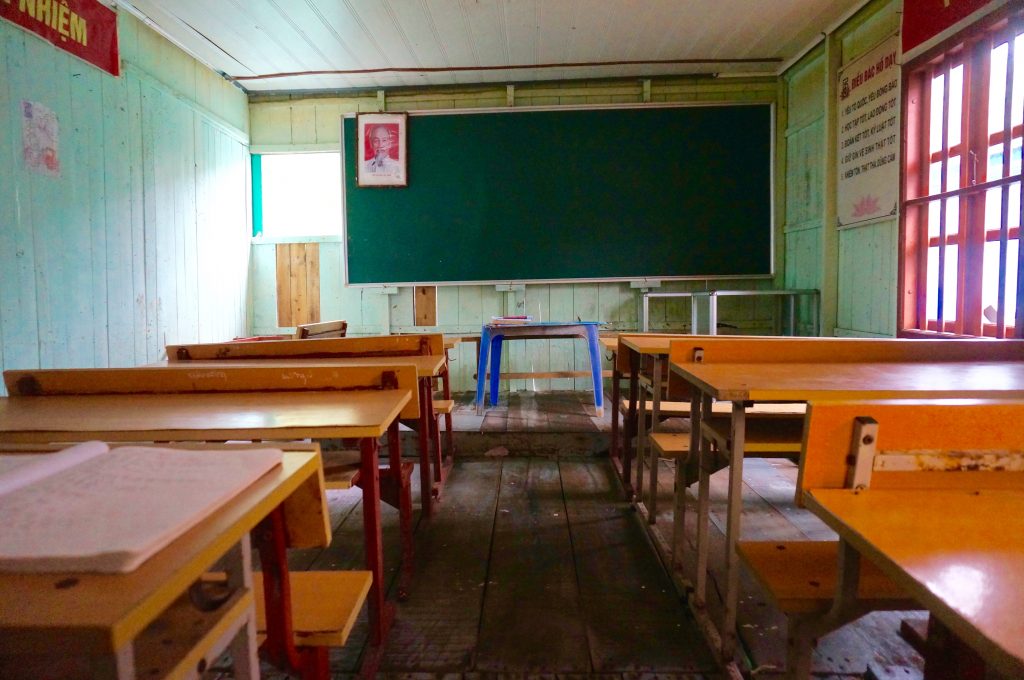

The Floating Village
Floating villages are among the most notable attractions of Halong Bay. There are some villages in the World Heritage Site: Ba Hang, Cua Van, Vung Vieng and Cong Dam. Among them, Vung Vieng and Cong Dam villages belong to Bai Tu Long Bay in a less touristy area. This is where these photographs above have been taken. To get to the floating village, we were lucky to have everything coordinated by the Indochina Junk Company we decided to stay with on our journey. The cruise company has strong relationships with the local people and provides row boats that paddle out to these isolated villages where the locals warmly welcome outsiders to share glimpses into their special world.
Each fishing village has about 30 – 50 families with a population of around 200 – 600 people. As most of the rock islands in the area are too poor to be cultivated, daily life in the village can be very hard and poor. Food and water are imported from the mainland and the primary source of income is from fishing and tourism activities. The residents tie the floating homes together to protect against typhoons or storms. Children in the villages typically learn to swim before they can even walk, helping their parents at an early age sustain the floating village they call home.
The village is a true water world, rising and falling with the tides, sheltered amidst majestic limestone towers. The floating village is home to many generations, as many of the residents never leave, but grow old in this unique world where they are born into. See below for photographs on the nearby pearl harvesting site and detailed travel tips.

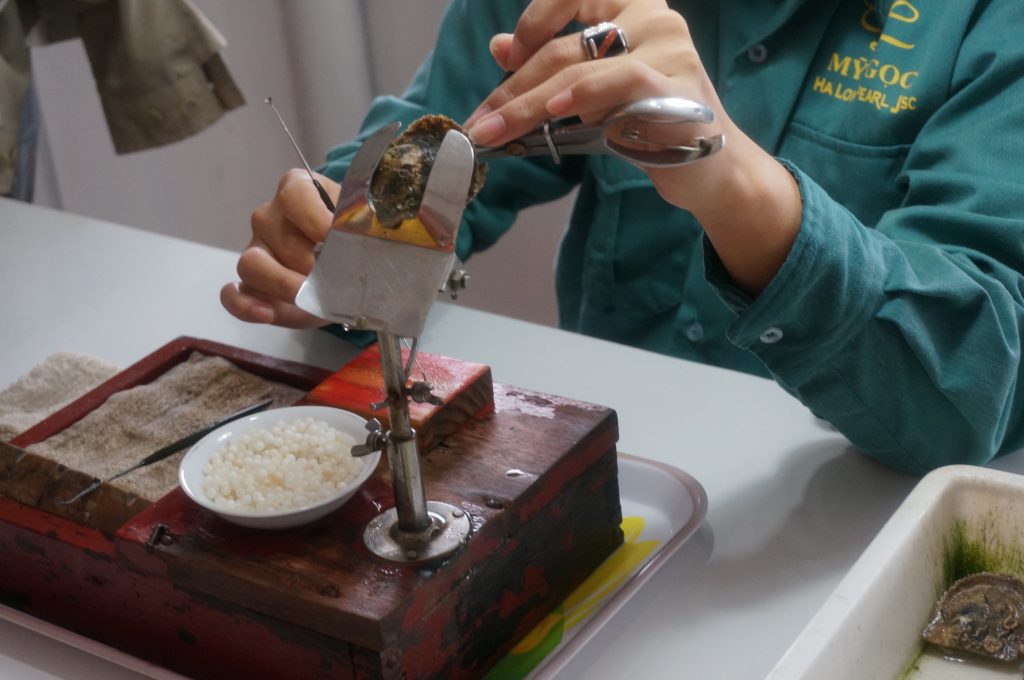
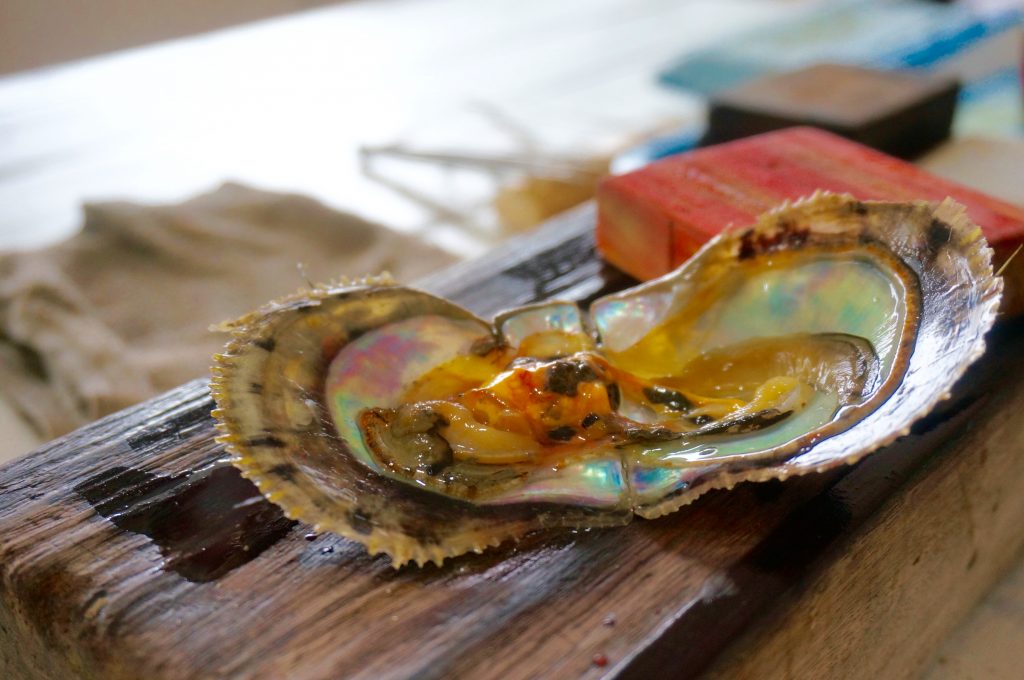
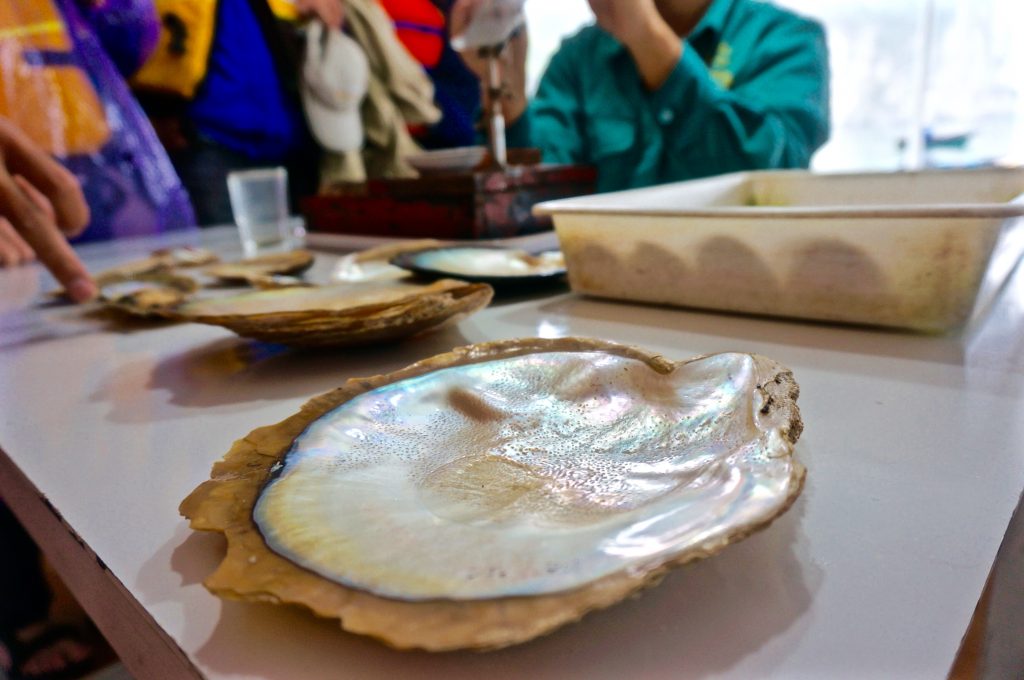
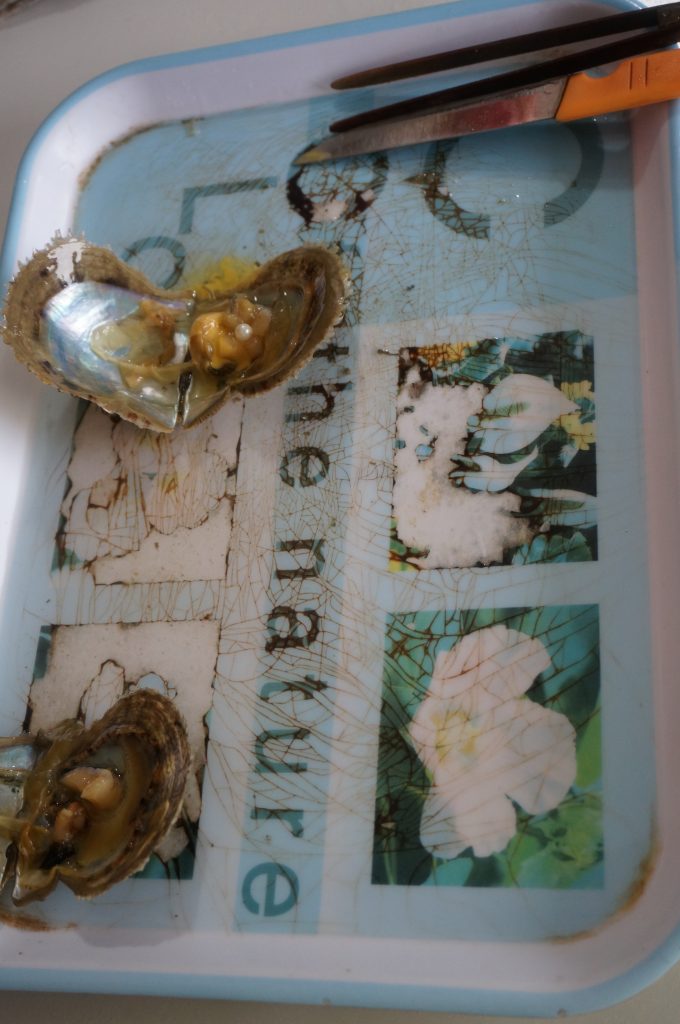

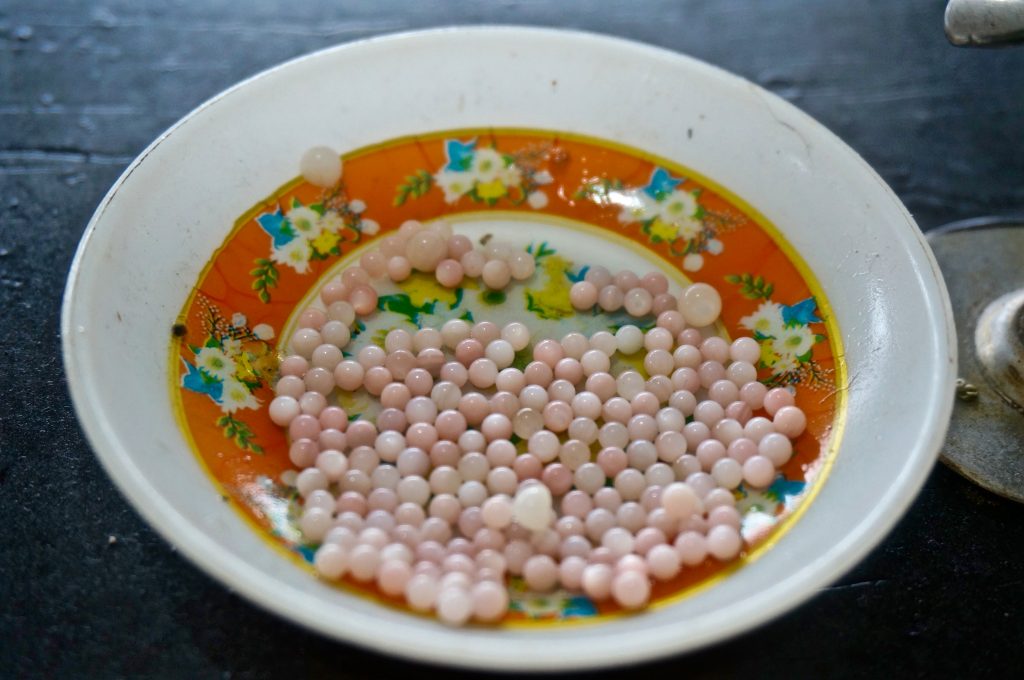
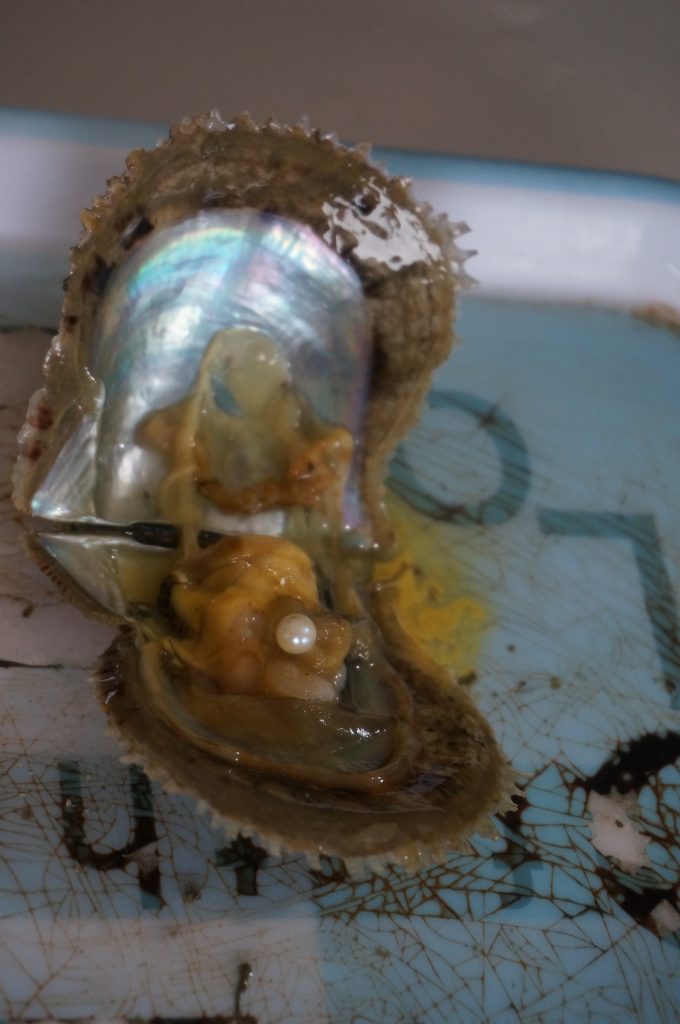
Pearls in the Making
From the floating villages, we made our way over to another part of the Bay to find a pearl farm where pearls are cultivated. The pearl farm where people are allowed to visit is owned by Halong Pearl Join Stock Company, who developed pearl handicraft from a traditional sea product to a valuable item. The pearl farm is located in an isolated water area named Tung Sau, surrounded by undulating limestone islands.
Visiting the pearl farm, we were able to witness the intricate process required to make a valuable pearl from the first step of growing and harvesting a pearl from these very waters photographed above. Pearls are the only gemstones in the world to have been extracted from living animals. While some oysters die after pearl extraction, there are mussels which remain alive even after the removal of pearls. The collection of pearls has been around for over 4000 years – can you believe that? Learning more about pearls and the exhaustive process in harvesting them from an oyster, to waiting years for the pearl to actually grow, and finally, to the retrieval and cleaning of a single pearl stone for final production, a lady will truly learn to appreciate her pearls. What a fascinating learning experience. Guests at the pearl farm have the option to purchase single pearls or full jewelry pieces onsite. I can’t think of a better souvenir for your lady-self than a pearl from these spectacular waters. Life is short, buy the pearl, girl.
Tips for Activities in Halong Bay
- How do you coordinate these elaborate water activities? Aboard a 2 or 3 night cruise option with Indochina Junk, all activies, including this special trip to the floating villages can be perfectly planned for you and your party. The Indochina Junk has an incredible reputation within the local community and sets up customized visits within these private villages. With that said, I highly recommend using the Indochina Junk Company to plan your Halong Bay adventure.
- When is the best time to visit? I get this question often and it’s a tough one to answer because it completely depends on your preference. If you want to be in a bikini baking in the hot southeast Asian sun, then definitely visit in the late spring/summer months (April – August). The prime seasons to go, when temperatures are just right would be the fall or early spring. However if you are like me and plan to go during the winter months (January – March), I found the cooler temps and occasional rain to be somewhat mystical of the region and perfectly pleasant. Just be sure to bring a sweatshirt and wear a poncho if the rain passes through. I personally prefer the winter months because it is less touristy, so you might even have the opportunity to be the only tourist exploring the village like I did.
- What does a lady wear? Bottom line, be comfortable. You are going to be in kayaks, row boats, and small spaces when visiting these floating villages. There are narrow docks and little room to dance around before falling in the water. I highly recommend packing sneakers, yoga pants or workout pants (that you are OK with getting wet), and a tshirt/sweatshirt depending on the time of year you plan to visit. The Indochina Junk provides its guests traditional Vietnamese hats to wear for protection from the elements, so no hat is necessary.
- How do you get here? Not as complicated as you may think. Fly into the international airport of Hanoi, Vietnam (in the northern part of the country) and from there, it is about a 3.5 hour drive out to the docks along these beautiful bay waters. Almost all junk boat tour companies provide complimentary van transportation from Hanoi to where the boats dock and depart.
- Have more questions? No worries. Feel free to e-mail [email protected] for specific questions about this travel experience in Vietnam.